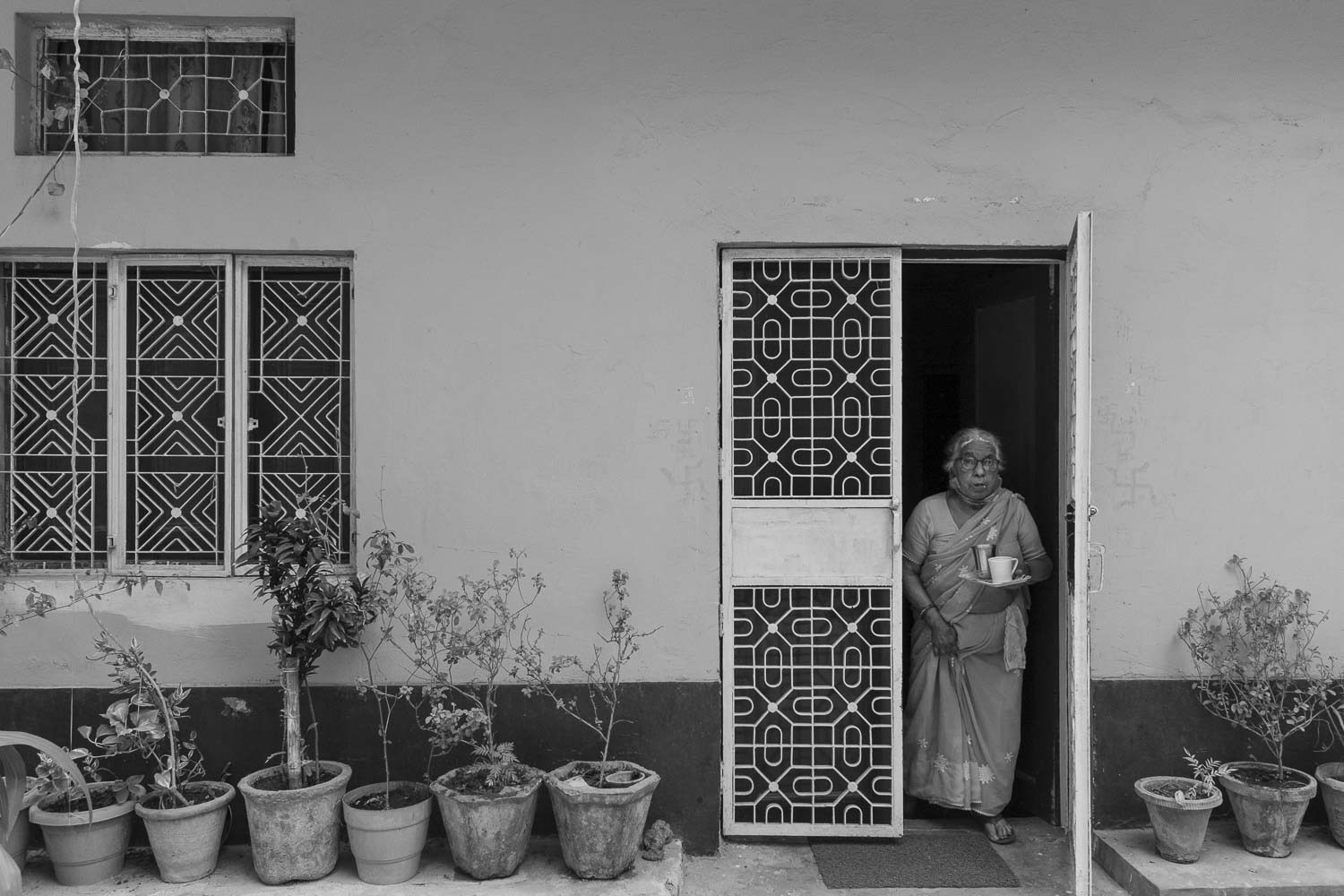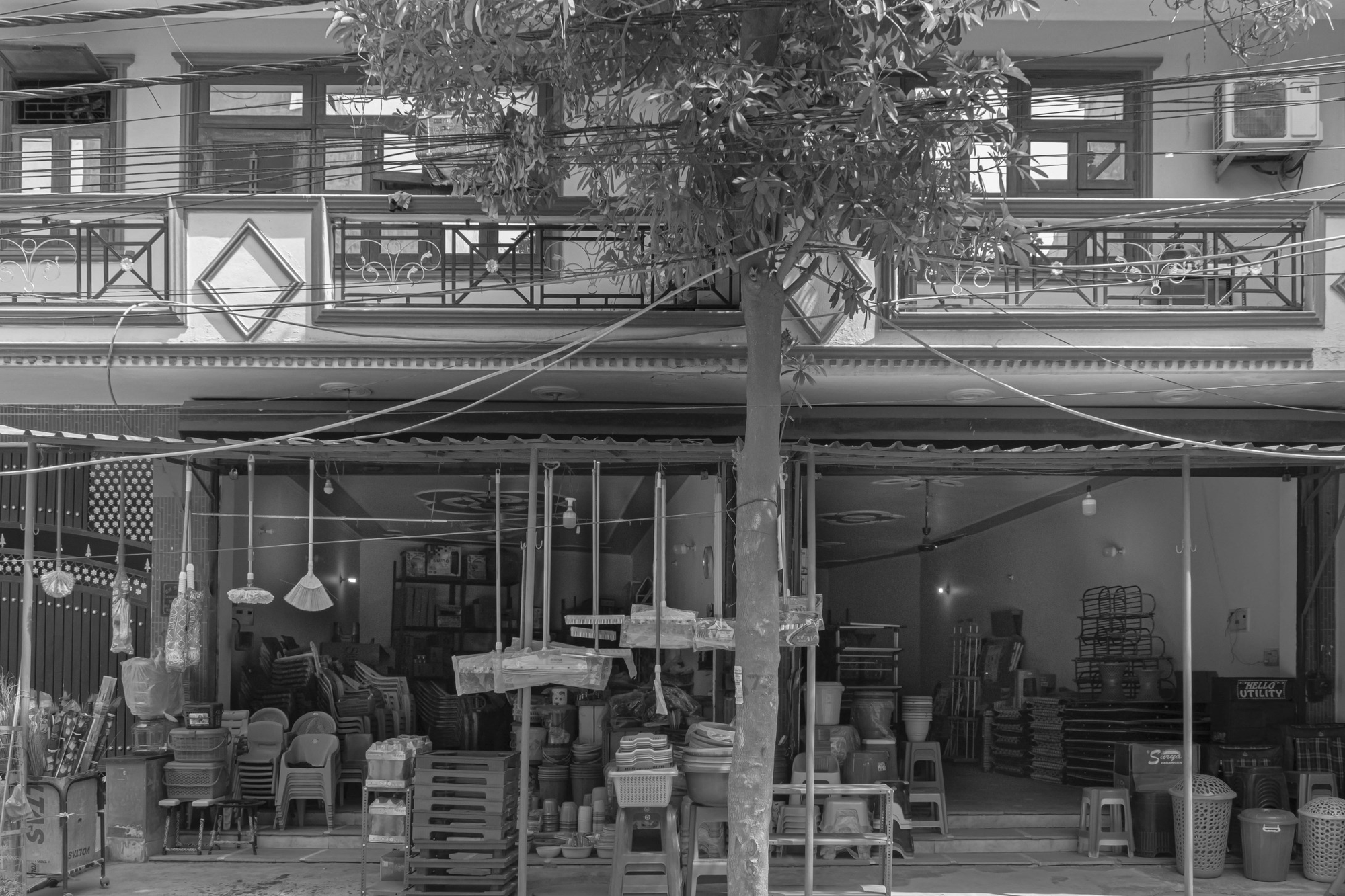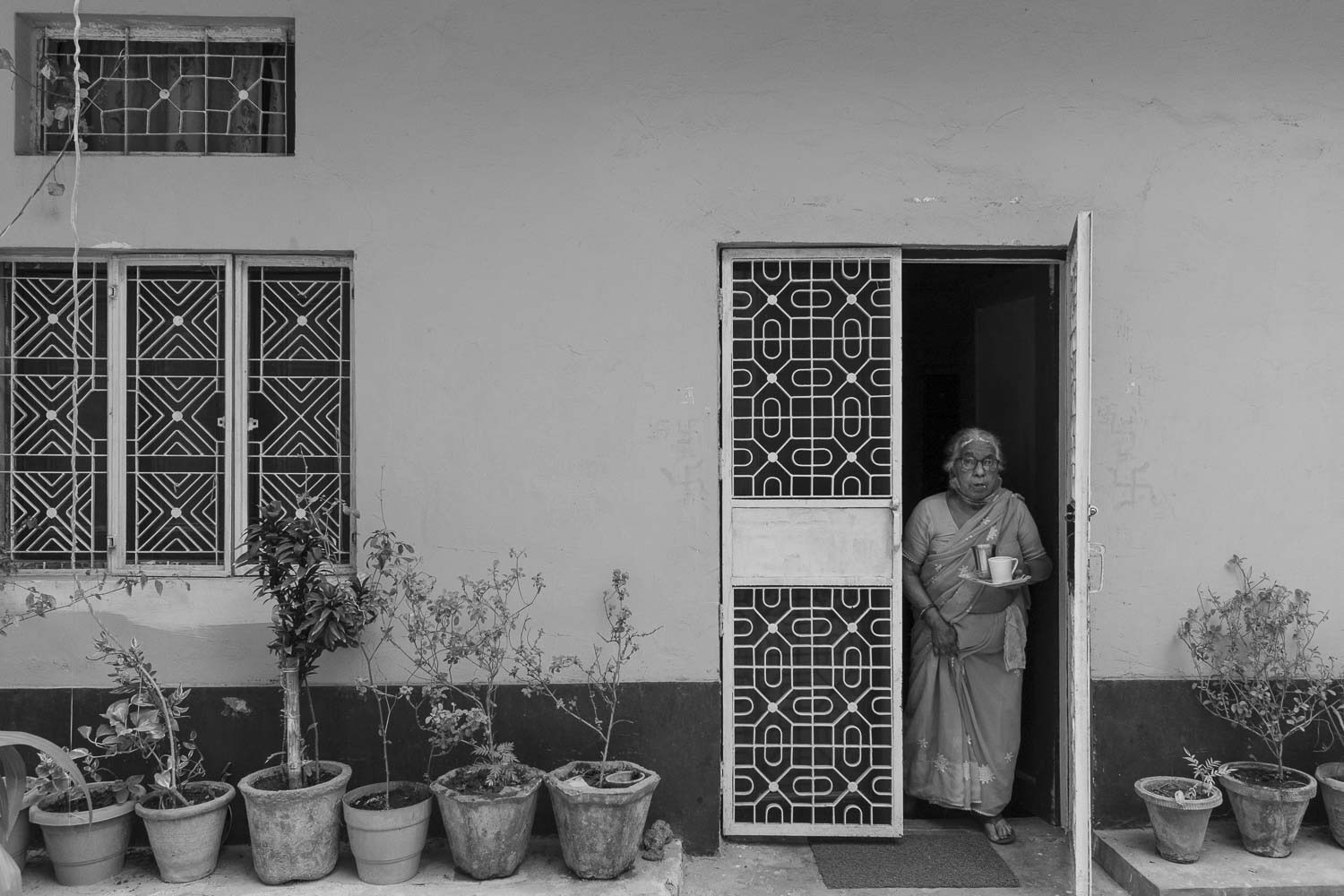Amma: Against All Odds/ Rhea Saini/ Issue 13

I live in a house that has four living spaces that cater to three different families and my grandmother. This means my house has four separate sections. On the ground floor of the house, I enter my grandmother’s kitchen, whom we lovingly call ‘Amma’. I see her mixing gram flour, some vegetables and spices in a bowl. An oil smeared pan is on the gas stove, waiting to turn the mixture into something delicious. She’s a great cook, one can say, a multitasker who believes in delivering the best results in the shortest amount of time possible.
I stood still and observed her quick but careful movements in silence as she poured the mixture onto the sizzling pan. In that moment, I was reminded of Khushwant Singh’s ‘The portrait of a lady’ where he describes his grandmother: “Her silver locks were scattered untidily over her pale, puckered face, and her lips constantly moved in inaudible prayer. Yes, she was beautiful.” Yes, my grandmother is beautiful! Old age and medical issues have impacted her health over the years but her grace and resilience has only been strengthened with the passing years. 84 now, the smile on her face has no need for pretence, it sits there confidently, affectionately.
“Besan chilla, it was your dadaji's favourite” she spoke up, interrupting my train of thoughts. Her eyes lit up as she looked at me. Could she read my thoughts?
Like many other things, cooking besan chilla is also a way of remembering her husband, my grandfather. A towering figure in both stature and authority. He endured a prolonged struggle with cancer, before finally losing the fight six years ago. Amma, whose life revolved around her husband's well-being was suddenly a void. All of us accepted that Dadaji’s demise would hit amma the hardest. We were ready to give all our love and support to her. But of all the members in our family, amma was the one who remained strong and composed. Almost as if she was ready to take on this new role in the family. The role of a matriarch, an 84 years old entrepreneur, ‘Woman of the house’.
This visual narrative pays tribute to this unwavering matriarch who has anchored us over the years, provided us with a real sense of home. Perhaps, she is home for so many of us.
Amma ran a furniture business with my grandfather for over two decades which was forever altered by his passing. However, with firm determination, amma embraced her new reality. She courageously assumed the sole responsibility of the business and breathed new life into their shared legacy. This business has become an integral part of her life, weaved into her routine like clockwork.
I once asked amma, why she worked so much. Her eyes gleamed as she said, “Staying busy has become my companion, providing me purpose and a reason to move on in an otherwise mundane life without your dadaji”. She would then ask, almost to deflect the conversation, “when will you get married?” I would simply say “soon”, to steer the topic away.
Her day at the shop typically begins with sipping on a hot chai from a stainless steel tumbler after offering her prayers to God. It’s not an interesting job, some days are slower than usual but amma seems content sitting at the counter and observing hustle bustle of the market. I can’t read her thoughts or observation but I think she sees more than she speaks. Her memories however sometimes return with visceral details. After all, she has lived through numerous historical events in the capital.
I vividly remember one such story. She was just eight. It was around independence and amma’s family was amidst communal violence. Her family resided in a small rented accommodation in Pahari Dhiraj, a small locality in Delhi’s Sadar Bazar. They ran out of food supplies one time during the Hindu-Muslim clashes. My great grandfather crossed a lane of Muslim inhabitants to get to the nearest shop to restock. The fear of getting killed hung over his head. He wore a white ‘Namaz topi’ to impersonate a Muslim man and ventured out. As he was returning he was caught by someone who assumed him to be a Muslim. “Why are you walking towards the ‘Hindu lane’? Terrified for his life, he revealed his true identity. The Muslim man offered to help and dropped him off to his home safely. I thought about asking her about the religious tensions and violence currently happening in the country but did not. Maybe I was scared she would ask what I thought about it.
My great-grandfather served in the state’s horticulture department during the Colonial rule. He worked as a private gardener for several British officials. On one occasion, he brought amma with him to work and introduced her to one of the officials. The British gentleman greeted amma and in broken Hindi, asked for her name. Shy and barely 10 years old, amma didn’t understand much and accidentally blurted out ‘Santra’ instead of Santosh, her actual name. The British official went inside his house, returned with an orange and gave it to her.
It’s remarkable that amma retains so many memories from the past. In addition to the historical stories amma shares, I have heard tales of her past heroics from my father. Whether carrying him to the hospital after a bull attack or facing personal challenges, I often wondered about her incredible strength and kindness.
There are times when Amma feels the weight of old age and ongoing health issues bearing down on her. In these vulnerable times, she often finds herself missing my grandfather. Sometimes she’d playfully put the blame on him for leaving her behind in this changed world full of responsibilities. The frustration in her voice is palpable, but so is the unexpected strength she discovered in the wake of his passing. Despite the struggles, she somehow always bounces back, recovering her strength like a loyal employee returning to her daily duties. Through these photographs, I depict Amma as a symbol of strength and grace, rising above the constraints of age and loss with enduring love. Her strong willpower and positive attitude have inspired bravery in our family, revealing the beauty that emerges from resilience.

My grandmother, whom we lovingly call amma, walks past my late grandfather’s portrait in their drawing room. They were married for 60 years.

The furniture business that my grandparents shared, spans over two decades. Now, amma manages the shop, which is located on the ground floor of our house.

Amma drapes her saree, preparing for the day that typically begins at the crack of dawn, around 5 am, or sometimes even earlier, when she doesn’t get a restful sleep.

Amma engages in her prayers at a small wooden temple box set up within the shop. The shop operates for roughly twelve hours a day, six days a week, with breaks in between.

Using her understanding of numbers and basic Hindi, amma takes the time to personally go through the ledgers and check all purchases to ensure accuracy.
 Managing a furniture shop means taking care of vendor relations, looking after inventory, finances and more. Shop meetings take place once every three or four months, for restocking products. Amma accompanied by her help, engages with two of her vendors during one such meeting.
Managing a furniture shop means taking care of vendor relations, looking after inventory, finances and more. Shop meetings take place once every three or four months, for restocking products. Amma accompanied by her help, engages with two of her vendors during one such meeting.

Amma steps out of the house with tea and some snacks for the evening at the shop.

Having a big family means frequent celebrations. It’s one of those occasions where amma meets members of the extended family.

The family consistently prioritizes timely visits to the doctor, knowing its importance in her life.

Amma reviews her medical reports before discussing them with her sons for a brief overview.

Indulging her sweet tooth, amma pauses her day to swing by the local sweet shop for some jalebis.

I typically bond with amma during our coconut oil head massages, which usually conclude with me styling her silver hair into plaits, just the way she likes.

Amma basks in the winter sun, flipping through an old photo album filled with dadaji’s retirement photos.

Old age and prevalent medical issues have impacted amma’s health over the years. But amma, now 84, still finds a reason to smile everyday.
Rhea Saini (b. 1995) is a Delhi based photographer whose evocative work delves into the realm of inti-mate emotions. She completed her PG Diploma in photography from Sri Aurobindo Centre for Arts and Communication, under the mentorship of photographer Bharat Choudhary. While at SACAC, she honed her skills and developed a unique artistic vision. Her photography revolves around personal narratives, often exploring the intricacies of human emotions and the essence of relationships. Rhea’s work also showcases a balance between vulnerability and strength, inviting viewers to delve into their own emotional landscapes. Among her subjects, she has extensively explored her family, capturing the nuances of familial bonds and the rich tapestry of shared experiences. As a photographer, Rhea seeks to create an intimate space where emotions can be experienced and shared. She continues to explore new avenues and is currently experimenting with moving images.